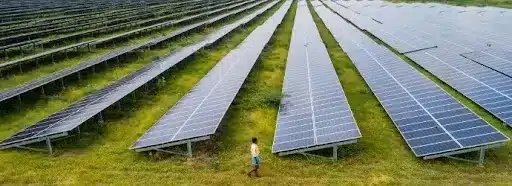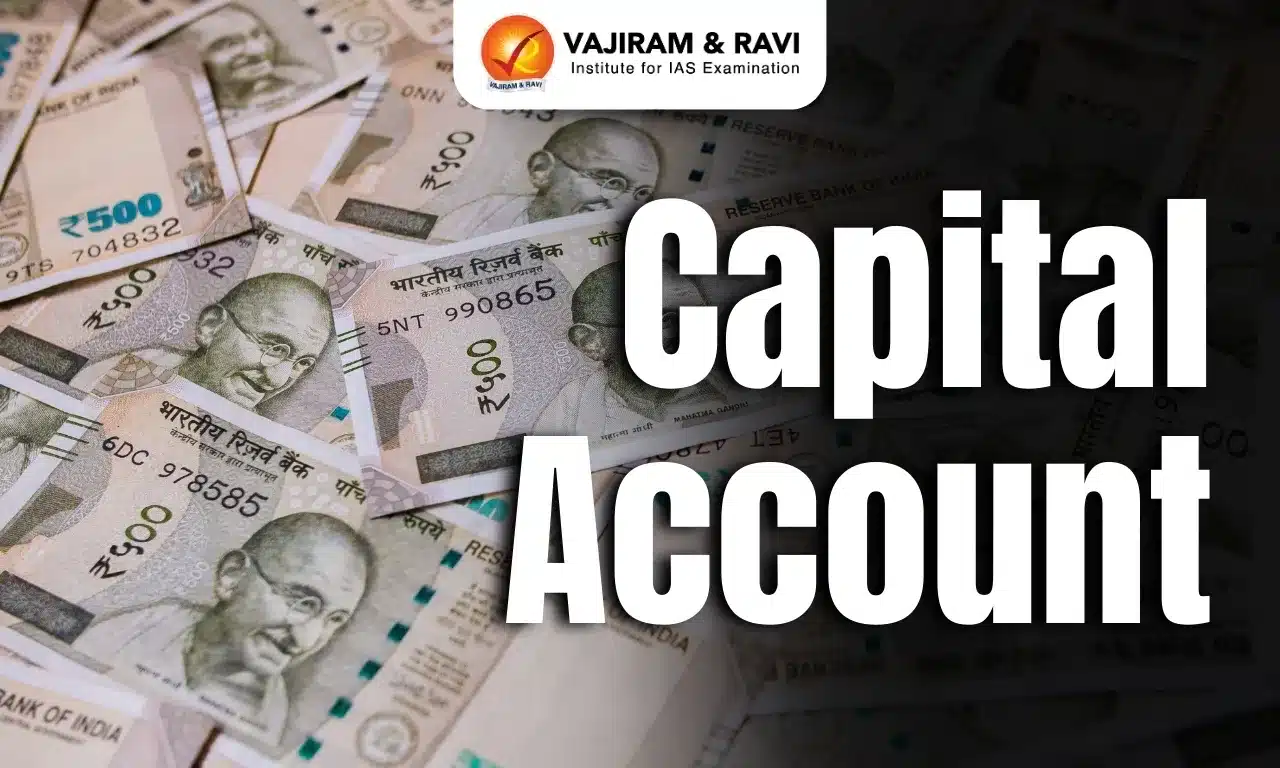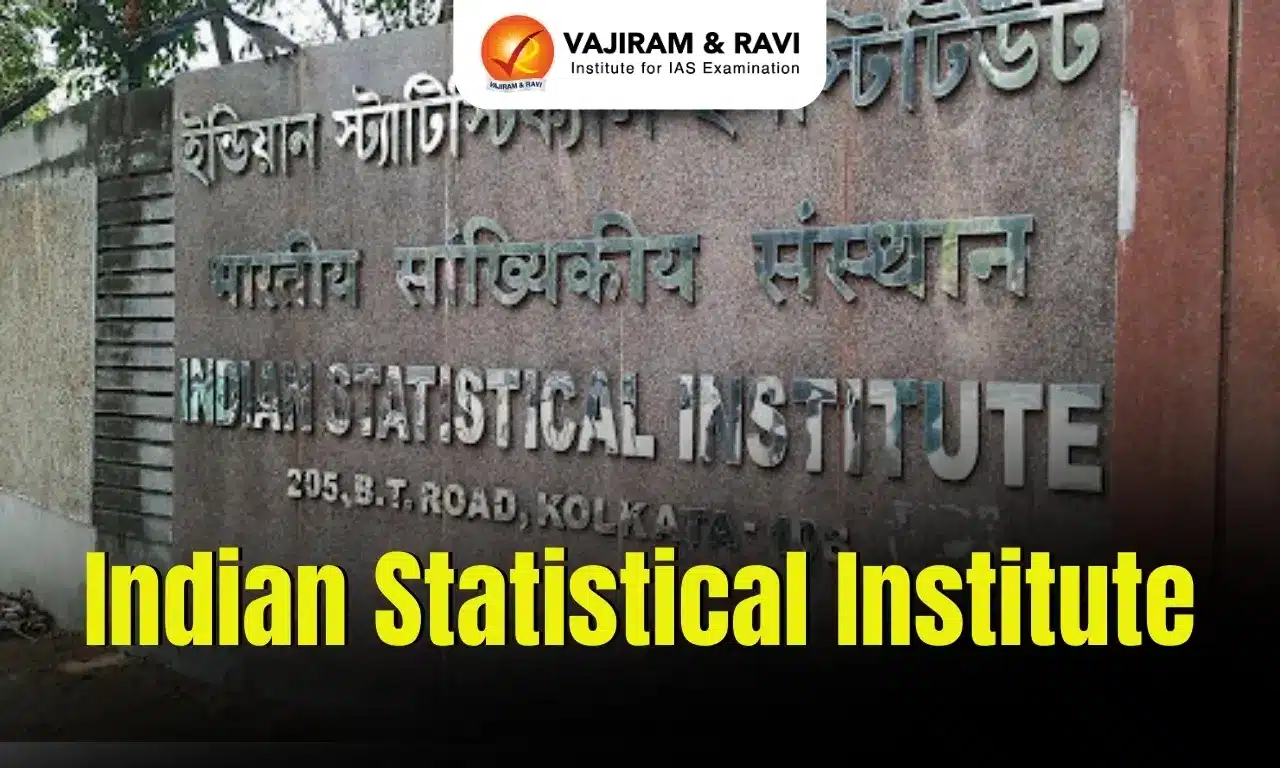What’s in today’s article?
● Why in News?
● What is Approved List of Models and Manufacturers of Solar Photovoltaic Modules (ALMM list)?
● Solar PV imports in India
● Steps taken by India to promote domestic manufacturing
● Scope for solar in India
Why in News?
Recently, in March 2024, the Ministry of New and Renewable Energy (MNRE) ordered to re-implement its 2021 notification of an ‘Approved List of Models and Manufacturers of Solar Photovoltaic [PV] Modules’, also called the ALMM list.
This order attempts to increase local sourcing of solar modules to support India’s renewables manufacturing ecosystem. However, it is widely seen as import restrictions on solar PV cells.
What is Approved List of Models and Manufacturers of Solar Photovoltaic Modules (ALMM list)?
- About
- This list consists of manufacturers who “are eligible for use in Government Projects/Government assisted projects/ projects under Government schemes & programmes.
- This includes projects set up for sale of electricity to the Central and State Governments.
- Rules were kept in abeyance for two years
- The government did not implement this list for two years without giving a clear reason.
- It’s believed this pause came about because renewable energy producers, who had contracts to sell electricity to the government before these rules were made, were concerned.
- Back then, most solar equipment was imported from China because it was cheaper.
- India’s own renewable energy sector couldn’t keep up with the demand for solar equipment at the prices offered by Chinese manufacturers.
- Re-introduction of the rule
- The govt re-introduced the rule in March 2024.
- They decided to bring back this list because they believe that measures like the Production Linked Incentive (PLI) scheme have helped Indian companies increase their production and become more competitive in pricing.
- PLI scheme aims to encourage investment in key sectors, create economies of scale, and improve the competitiveness of Indian manufacturers.
- This scheme is part of the Atmanirbhar Bharat (‘Self-Reliant India’) Programme.
- Now, they think domestic companies can meet the demand for these products in India.
- This is an import substitution effort, and not an attempt to restrict imports.
Solar PV Imports in India
- Dependency on China and Vietnam
- India is overwhelmingly import dependent to meet its demand for solar cells and modules — with China and Vietnam being the country’s major suppliers.
- Import statistics
- As per the data submitted by the govt in Parliament in February 2023, India imported about $11.17 billion worth solar cells and modules in the past five years.
- And until January of 2023-24, data from the Ministry of Commerce’s Import-Export showed that China accounted for 53% of India’s solar cell imports, and 63% of solar PV modules.
- Why is China a leading exporter?
- China was the most cost-competitive location to manufacture all components of the solar PV supply chains.
- This is mainly because of the lower cost of power supplied to the industry.
- Electricity accounts for more than 40% of production costs for polysilicon and almost 20% for ingots and wafers.
- Chinese government policies prioritised solar PV as a strategic sector.
- Also, the growing domestic demand enabled economies of scale and supported continuous innovation throughout the supply chain.
Steps taken by India to promote domestic manufacturing
- Notification of the ALMM order
- The govt notified the ALMM order in January 2019.
- But the issue attained centre stage in the wake of severe global supply chain disruptions during the COVID-19 pandemic.
- Announcement of PLI scheme
- Finance Minister Nirmala Sitharaman proposed the ₹19,500 crore PLI scheme in the Union Budget of 2022-23.
- This was to scale domestic manufacturing of the entire solar supply chain — from polysilicon to solar modules.
- Introduction of steep custom duty
- The government also introduced a steep 40% customs duty on PV modules and 25% on PV cells.
Scope for Solar in India
- Increasing demand
- The government’s ambitious target of 500 GW of installed capacity from non-fossil fuels by 2030 is the main driver to scale solar power in India.
- India also accounts for the fastest rate of growth for demand of electricity through 2026 among major economies.
- This is because of strong economic activity and expanding consumption of products to mitigate extreme weather.
- Solar power accounted for about one-third of all energy generated from renewables between April 2023 and February 2024.
- Estimated solar power potential
- The country has an estimated solar power potential of 748.99 GW.
- Hence, the potential of solar energy is not fully tapped, so far.
- The government is making efforts to harness the available potential through various schemes & programs.
Q.1. What is Atmanirbhar Bharat Abhiyan?
The Atmanirbhar Bharat Abhiyan, or Self-Reliant India campaign, is a program launched by the Indian government in 2020 to help the country recover from the COVID-19 pandemic. The program’s main objective is to make India self-reliant by strengthening its economic system and giving the country a new direction for development. The program is built around five pillars: Economy, Infrastructure, Systems, Vibrant Demography, and Demand.
Q.2. What are solar photovoltaic (PV) cells?
Solar photovoltaic (PV) cells, also known as solar cells, are electronic devices that convert sunlight into electricity. They are made of semiconductor material that can conduct electricity better than an insulator but not as well as a metal. When light hits a PV cell, it may be reflected, absorbed, or pass through the cell.
Source: The ‘import restrictions’ on solar PV cells | Explained
Last updated on November, 2025
→ Check out the latest UPSC Syllabus 2026 here.
→ Join Vajiram & Ravi’s Interview Guidance Programme for expert help to crack your final UPSC stage.
→ UPSC Mains Result 2025 is now out.
→ UPSC Notification 2026 is scheduled to be released on January 14, 2026.
→ UPSC Calendar 2026 is released on 15th May, 2025.
→ The UPSC Vacancy 2025 were released 1129, out of which 979 were for UPSC CSE and remaining 150 are for UPSC IFoS.
→ UPSC Prelims 2026 will be conducted on 24th May, 2026 & UPSC Mains 2026 will be conducted on 21st August 2026.
→ The UPSC Selection Process is of 3 stages-Prelims, Mains and Interview.
→ UPSC Result 2024 is released with latest UPSC Marksheet 2024. Check Now!
→ UPSC Prelims Result 2025 is out now for the CSE held on 25 May 2025.
→ UPSC Toppers List 2024 is released now. Shakti Dubey is UPSC AIR 1 2024 Topper.
→ UPSC Prelims Question Paper 2025 and Unofficial Prelims Answer Key 2025 are available now.
→ UPSC Mains Question Paper 2025 is out for Essay, GS 1, 2, 3 & GS 4.
→ UPSC Mains Indian Language Question Paper 2025 is now out.
→ UPSC Mains Optional Question Paper 2025 is now out.
→ Also check Best IAS Coaching in Delhi

















